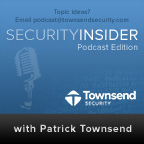Podcast: Better System Logging |
If you could find out if your network is being hacked or tampered with, as it happens in real time, would you want to know? If there was a tool that collected, encrypted, and standardized your IBM i security events to give you peace of mind, would you use it?
We’re guessing yes. Luckily, system monitoring software is widely available for IBM operating systems, and there are two big reasons why you should use system monitoring:
1. Most system breaches go unnoticed for months (sometimes years) before the breach is discovered and dealt with. By then a hacker or employee may have gained access to thousands of personal files containing sensitive information such as credit card numbers and home addresses.
2. Less than 1% of the breaches in 2011 were discovered through log analysis, even though 69% of these breaches could have been detected before any data was lost if proper system logging was in place.
You know you need to collect your system logs in real time in order to detect unauthorized changes to your system, but with all of your security logs being created on different systems, web services, and applications, the task might seem overwhelming. How do you get a consolidated view of the security state of your database? How do you get information into usable format for log collection and Security Information & Event Management (SIEM) servers?
The answer is in a third party logging solution that can standardize, collect, and report security events. There are many logging solutions out there, but your solution should always provide you with these four key points:
1. Real time Log Collection. Your logging solution should collect logs of events in real time as they happen across multiple applications and servers. You should be alerted immediately to suspicious log events on your servers instead of receiving a batch at the end of the day or week.
2. High Speed Performance. Performance should not be a barrier when it comes to log collection and analysis. Your logging solution should be able to collect tens of millions of events from multiple applications and thousands of users per day without huge performance impacts.
3. Secure Communication. Your logging solution also needs to secure the transfer of events to a log server. Your logging solutions should use SSL TCP to encrypt log entries in transit from an IBM server to a log collection server.
4. Industry Standard. There is a standard format for system log events, and the data you collect from your IBM i and transfer to your log collection server should be in that format. The most widely used standards are the syslog standard based on RFC 3164 and the Common Event Format (CEF) used by a number of SIEM vendors.
Townsend Security’s Alliance LogAgent and LogAgent Suite with File Integrity Monitoring (FIM) allows IBM i users to meet compliance regulations by collecting security system logs and transmitting to a log collection server or any SIEM solution. Alliance LogAgent will help you achieve inner peace of mind.


